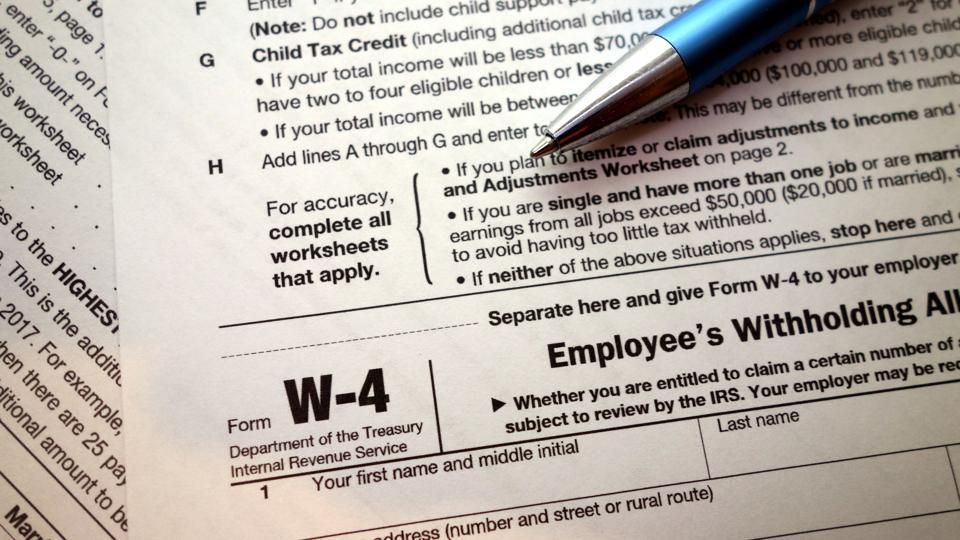Adjust Your W-4 Withholdings
Sep 03, 2022 By Triston Martin
In the U.S. tax system, most taxpayers follow the pay-as-you-earn (PAYE) method, where estimated income taxes are paid over the year and then recorded on tax day in the next year. Employers who are taxpayers are legally obligated under federal law to withhold a portion of the income earned by their employees for tax purposes by deducting a percentage of their regular pay.
To determine how much they deduct, employers base their calculations on the data that all new employees submit on the Formula W-4 form. If there is too much tax taken out, employees get refunds. But, the amount of tax withheld can change during the year. In certain instances, adjusting how much tax is taken out of your tax refund is sensible.
Events That Trigger Changes
The amount of tax that is withheld is determined by the following factors:
- You can choose to file for a "married" or "single" rate on your W-4
- The amount you earn (across the course of a single or multiple jobs)
- Should you decide to withhold any additional money
- The number of allowances you can claim
Any changes to your household circumstances, like having a baby or an employee losing their job, could immediately affect taxes. In these instances, it's worth adjusting the amount of withholding you pay to ensure you don't pay a larger tax bill than you need to.
Marriage
If you're married and file an income tax return jointly, the tax you pay could be affected in two ways. First, if your spouse earns income, household withholding could rise. In addition, your total withholding could decrease if your spouse isn't employed. There are other situations where filing separately is a good idea.
Divorce
Divorce could affect your household's income, but there's also the issue of alimony. Alimony received a new tax treatment in 2019 due to tax reforms under the Tax Cuts and Jobs Act enacted in 2017. With the new tax model, the alimony payment will not be tax-deductible for the recipient, and the payer is not required to declare their alimony as income.

Birth or Adoption
Adoption or birth of children instantly brings a new member to your household and decreases the overall tax burden to pay for the cost of having children. To maximize the most benefit of tax credits and deductions, consider reducing the amount of withholding.
New Home (or Other Major Purchases)
If you are buying a house, you may need to alter your withholding to prepare to receive tax advantages. There are various tax credits for first-time homebuyers, and the tax benefits that the IRS approves are often altered. This is true for any major deductions or credits you could be eligible for in a specific year, including credit for education and dependent care expenses, medical expenses, and charitable donations.
Getting Your Withholding Right
The IRS offers a helpful withholding calculator on its website. Furthermore. Form W-4 includes instructions on the form and a separate set of directions. A summary of the steps needed to modify your tax withholding can be found listed below.
- Utilize the IRS Tax Withholding Estimator online to calculate your federal income tax.
- If you think the changes in your tax bill are significant enough, you should speak with your employer about how to change the federal tax withholding. The employer might give you a blank W-4 form to fill out or send you to an online platform to complete the form.
- If you work at multiple places or if you and your spouse are employed, you must complete Step 2 on Form W-4. The information you provide in this step will be used in the next steps.
- If you are dependent, you must complete step 3 on Form W-4. This step determines how much of your income is cut because of the dependents you claim.

- If you are employed in multiple positions, you can choose to include all taxes on a single W-4. If you choose this option, you must enter the amount withheld from your previous job in Step 4(a) of Form W-4. Make sure you opt out of withholding from your job when you select this option.
- If you expect to receive other tax benefits in the coming year, you can decide to reduce the tax base. In Step 4(b) of Form W-4, you must enter the amount you think you will not have to pay. For instance, taxpayers purchasing their first home can take advantage of additional tax deductions. However, it must be explicitly stated in a W-4 with this line to reflect that benefit accurately.
- If you think you'll be required to pay additional taxes, you'll be able to withhold an additional quantity by entering an extra amount in step 4(c).








